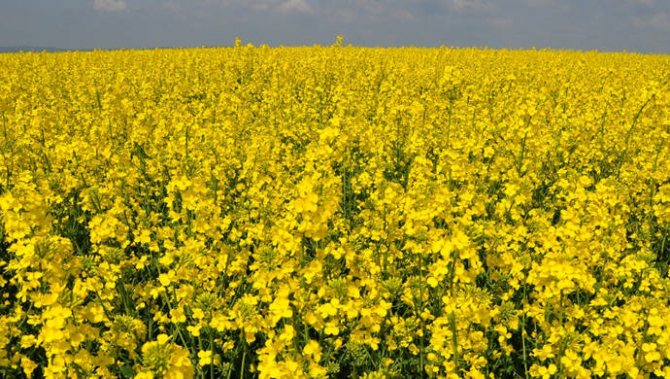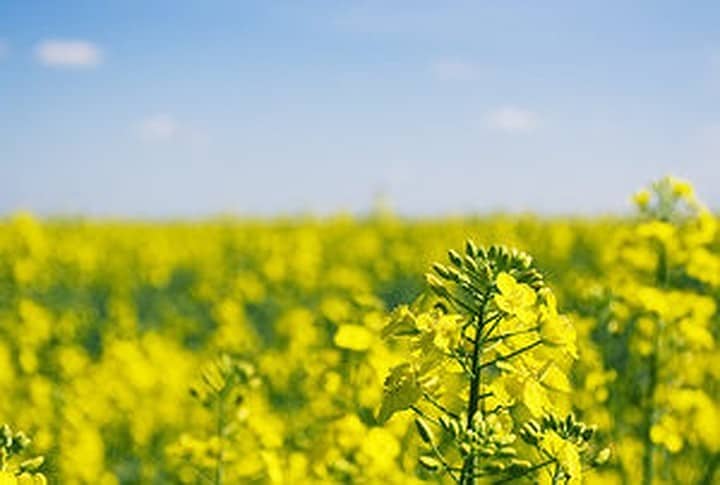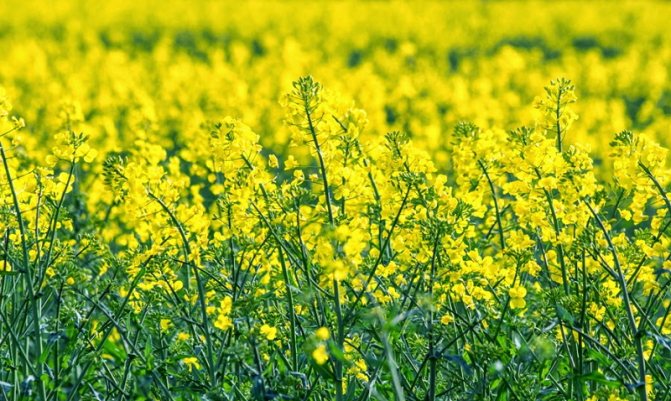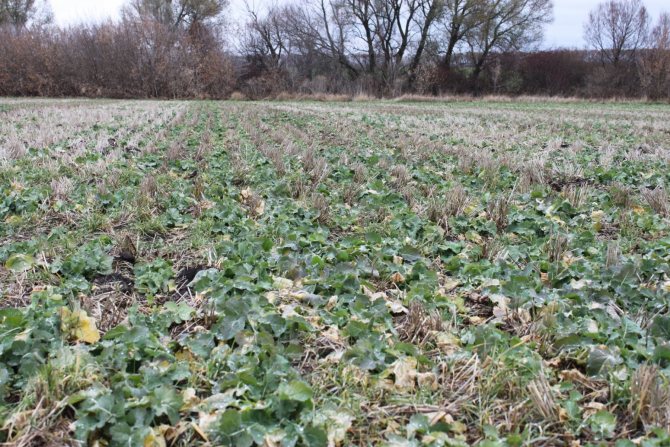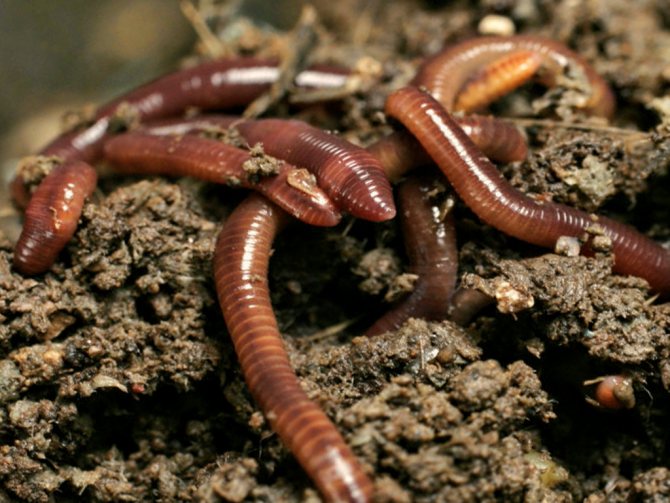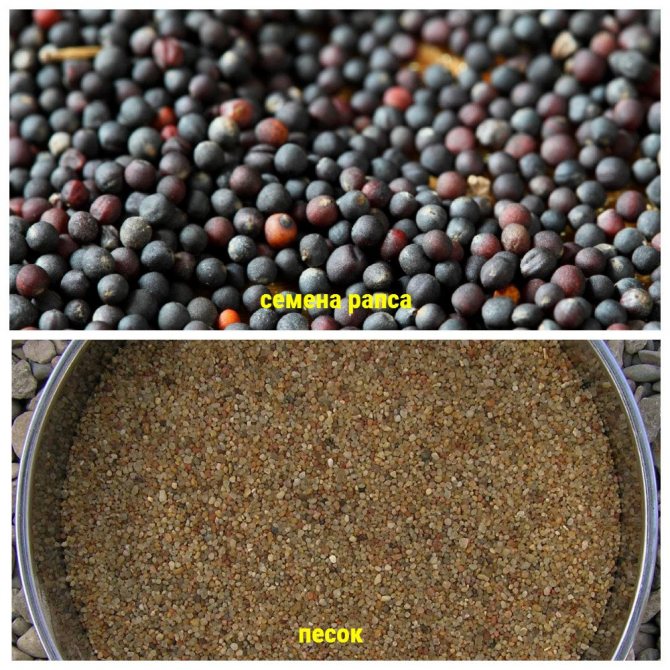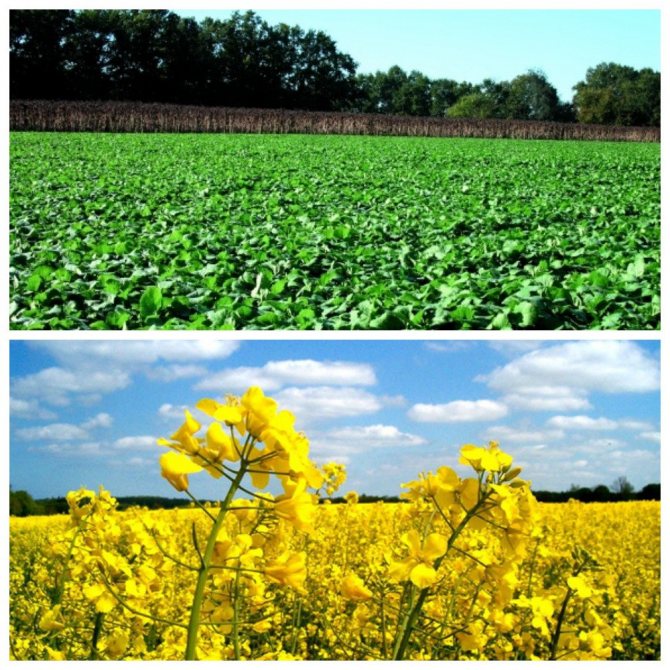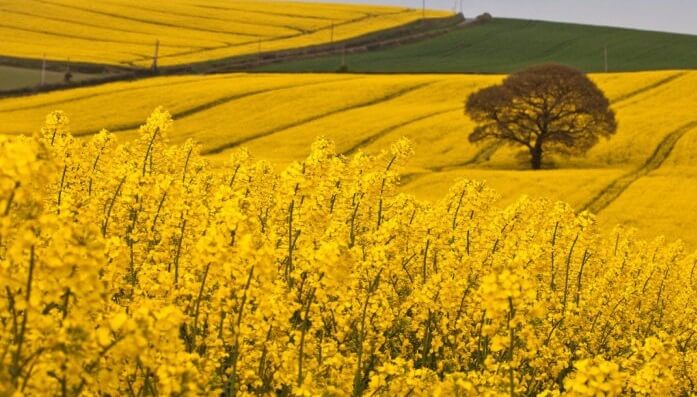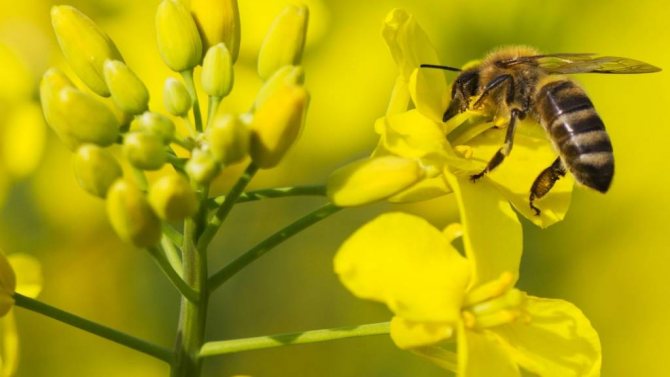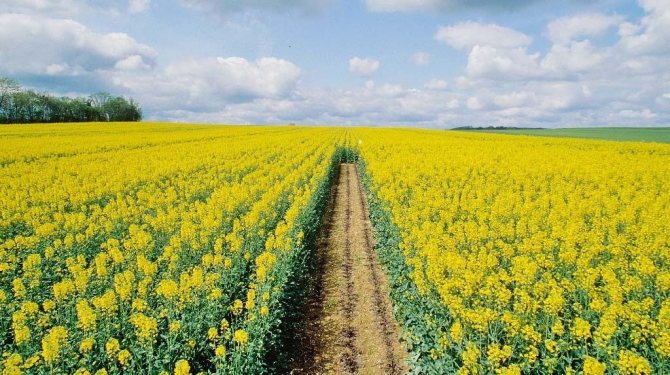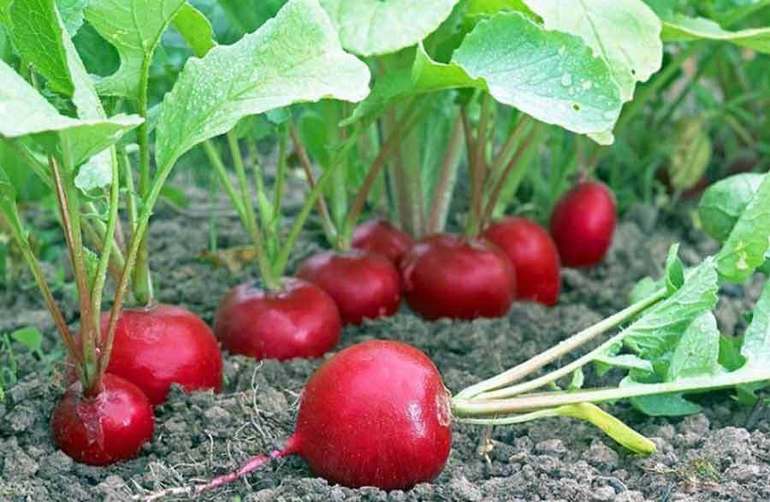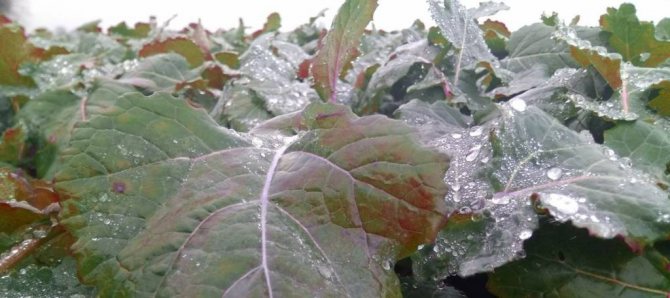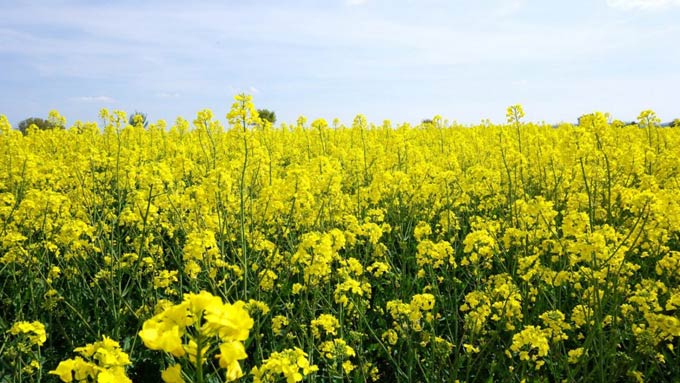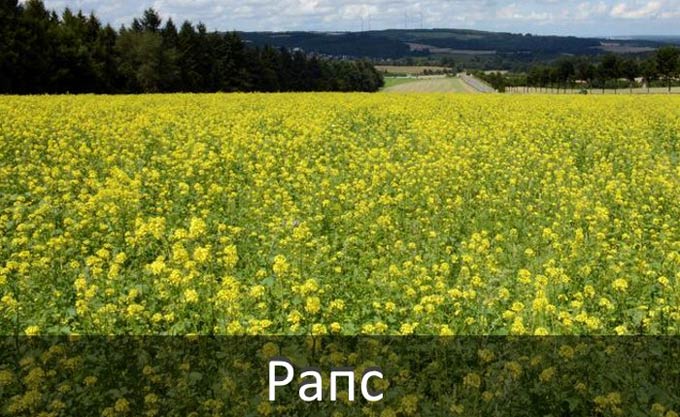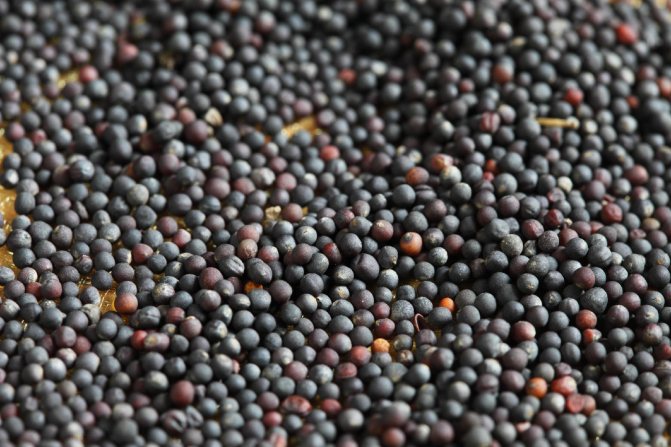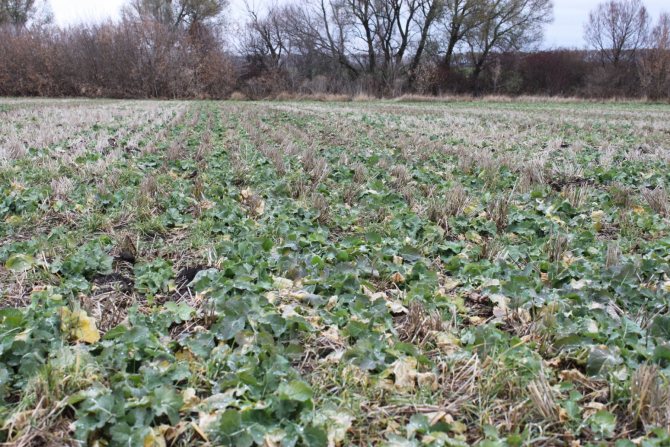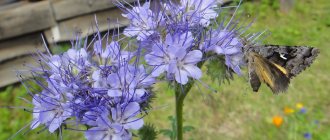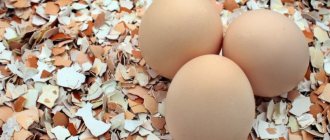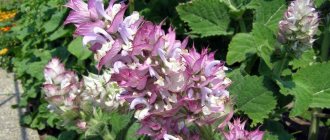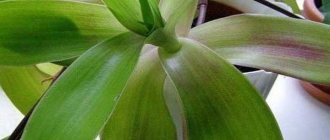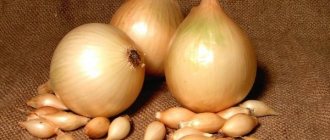Since 2020, the Ministry of Agriculture plans to actively support the production of oilseeds such as soybeans and rapeseed. What scares agricultural producers and whether it is possible to make rapeseed easier for production, the correspondent of the magazine "Agrotechnica and Technologies" figured out.
According to statistics, the sown area of spring and winter rapeseed in Russia decreased by 1.5-2% in 2020, which can hardly be called a significant reduction. “At the same time, while in some regions there is a decrease in acreage, in others, on the contrary, an increase is observed,” said Evgeny Shchedrin, Marketing Director of Euralis Semans Rus. For example, the sowing of spring rapeseed decreased in the Central Federal District, but increased in Siberia, and winter rapeseed was cultivated less in the Stavropol Territory, but more in Kaliningrad and Krasnodar. If agricultural enterprises refuse to cultivate rapeseed, then the matter is most likely in sales markets, since rapeseed is a crop intended primarily for export. In addition, rapeseed is quite difficult to grow - it requires a large number of treatments and measures to prevent crop loss (pod cracking), so a number of farms make a choice in favor of other crops, such as soybeans, the specialist notes.
The main benefits of rapeseed
Let's consider them in order.
- Rape is a good honey plant.
- It is used as animal feed.
- Rapeseed oil is used in the food industry.
Experienced gardeners grow rapeseed as green manure. Garden culture has advantages and disadvantages. She grows greenery quickly. If you embed greens in the soil, it will be filled with nutrients, including phosphorus. It is advisable to use rapeseed to enrich the soil with organic matter.
If you correctly apply this culture, the fertility of the soil will increase, and its properties will accordingly improve. The peculiarity of rapeseed is that it has large, powerful roots (the maximum size is 2 m!).
Spring and winter rapeseed - planting dates
Spring rape as a siderat is less whimsical. Drought tolerant, but watering needs to be done regularly to get enough green matter. Able to grow on depleted soils, but subject to sufficient lighting and watering. Heavy soils - clay and loam - breaks down with its roots, providing oxygen access to the roots of vegetable crops.
Despite the fact that there are separate varieties for summer and winter, gardeners sow winter varieties in spring, and spring varieties in winter. According to gardeners, spring rape, as a siderat, germinates well in the fall and yields a harvest before the onset of cold weather. It is left on the soil to rot, but in some cases the seedlings survive in frosts and continue to grow greens in the spring.
Planting rapeseed as fertilizer for the garden begins in early spring - in March, as soon as the snow melts. When the plants grow to 25 - 30 cm, they begin to bloom. At this moment, the greens are mowed so that the shoots do not become coarse during flowering, otherwise they will rot badly.
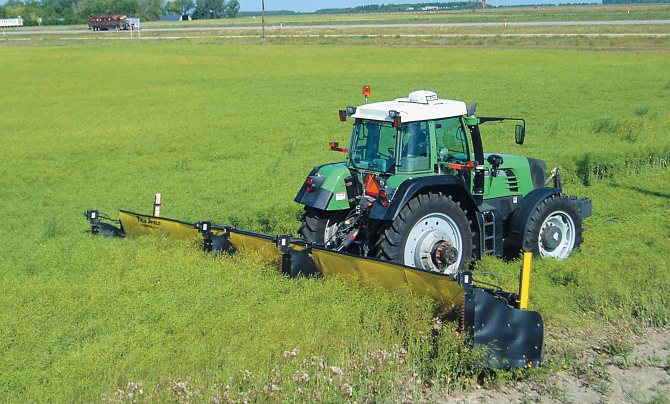
Before flowering, rapeseed as a green manure accumulates nutrients as much as possible, then it spends them on flowering and the formation of fruits - seeds.
Impact on soil
Thanks to its strong root system, rapeseed extracts a large amount of minerals from the soil. Horticultural crops improve soil aeration.Moreover, rapeseed contains an essential oil that has a disinfecting effect. Thanks to rapeseed, the soil becomes:
- looser;
- fertile;
- drained;
- breathable;
- protected from fungus.
The essential oil in rapeseed has a depressing effect on pests. In general, the green manure plant has many advantages.
- Protects the soil from erosion.
- Retains moisture longer.
- Provides prevention of wind erosion.
Briefly about the main
Usually a whole family of crops is called rapeseed - rapeseed itself, blueberry, different types of mustard, rape and others. As an organic feed, the plant has been used not so long ago, while it easily competes with well-known synthetic fertilizers. In terms of its composition and the amount of useful minerals, rapeseed is equated to cow dung.
Despite the excellent flowering of the plant, and the fact that rape is considered a good honey plant, its honey is deprived of a memorable aroma or rich taste. Due to the dubious benefits of such a product, most beekeepers refuse to put their hives in close proximity to the place of its growth.
Interesting! Today, rapeseed is used in the production of ink, biodiesel, lipstick, creams, plastics and even margarine!
With improper crop care, the winter type of rape easily becomes spring. If the plant is not mowed in time, its height reaches 1.5 meters. However, having removed rapeseed even in this form, after rotting it becomes no less nutritious organic fertilizer.
Impact on other plants, rapeseed disadvantages
To eliminate weeds, a garden crop can be planted in the aisles. As an experienced gardener, I recommend planting rapeseed between fruit bushes. Siderat saturates the soil with nitrogen, as a result, garden crops grow better.
Rape is a high quality natural fertilizer. But despite the advantages, the plant also has disadvantages.
- It does not take root in acidic soil.
- Does not tolerate stagnant water, therefore, requires very moderate watering.
- A significant drawback of rapeseed is that it needs to be planted only once every 4 years.
If you have grown cruciferous crops in a specific garden area, refrain from planting rapeseed. A typical representative of the cruciferous family is cabbage. If you plant rapeseed after this crop, diseases will arise.
Beets should not be planted after rapeseed. Siderat is a spreader of nematodes, beets are very sensitive to them! It is important to note that it is not only rapeseed that is used as green manure. Other effective green fertilizers:
- rye;
- mustard;
- oats
Culture properties
Rape is a one- or biennial herb with a well-developed tap root system and an erect, branched stem. The compact basal rosette is assembled from lyre-pinnately cut leaves, in the middle part of the leaf plates have an elongated lanceolate shape, in the upper part they are elongated lanceolate. It is easy to distinguish rapeseed from other representatives of the family by the bluish or purple tint of greenery. The bright yellow flowers of the plant, collected in loose shields, bloom in June. At the end of the season, in place of wilted inflorescences, rapeseed fruits are formed - smooth or slightly tuberous pods with dark globular seeds inside.
Rapeseed as green manure has a number of useful functions:
- loosens the soil by the roots, thereby increasing its air and moisture permeability;
- eliminates the negative consequences of compaction of the arable layer, activating microbiological processes;
- saturates the soil with phosphorus and sulfur;
- due to the content of essential oils and phytoncides, it disinfects the soil and fights weeds;
- rapeseed mulch retains snow on the site, preventing the soil from drying out and freezing;
- biomass decomposing in the soil creates a favorable breeding ground for earthworms and beneficial microorganisms;
- protects the arable layer from drying out, washing out and erosion.
Types of rapeseed
Gardeners grow 2 types of rapeseed: spring and winter. The second is more popular, it nourishes the soil better and protects crops from diseases. Winter rapeseed requires special care. Some summer residents combine this type with spring. Spring can be placed with oil radish, mustard, rye. Rapeseed is fed:
- zucchini;
- potatoes;
- pumpkin;
Yarovoy does not make high demands on the composition of the soil. The plant can be sown in spring, autumn, summer. Some summer residents plant rapeseed in mid-March. When choosing the time for sowing, one should take into account the climatic characteristics of a particular region. It is not recommended to sow rape if night frosts are predicted.


Botanical description
Rape belongs to the annual herbaceous plants of the cruciferous family. The culture is bred by crossing the rape with cabbage.
Stem - tall up to 1.5 ... 2 meters, straight, round shape. Has 15 ... 20 branches. Depending on the type, the color of the stem can be green, dark green with a bluish bloom. The surface is covered with a waxy coating.
Root - long, up to 3 m, fusiform, thickened at the base, branched. The lateral appendages extend horizontally and are located at a depth of 20 ... 45 cm.
Canola leaf plates - alternate, petioled, purple or blue-green hue. The lower leaves are slightly wavy, forming a basal rosette. Medium leaves - have an elongated spear-shaped shape. The upper ones are widened at the base, lanceolate.
The flowers are bright yellowcollected in inflorescences.
Fruit is a thin, straight or slightly curved pod, 6… 12 cm long. Inside the pod there are grayish-black round seeds.
In the wild, the culture is practically not found.
In agriculture, two forms of rape are used:
- Spring - refers to annuals. The vegetative period is up to 120 days.
- Winter - biennial. The vegetative period is up to 320 days
Sowing features
Before sowing rapeseed, you need to loosen the soil on the selected bed and form small holes. The optimum depth of 1 piece is 3 cm. I sowed seeds at a distance of 16 - 17 cm, pre-mixing them with a small amount of sand.
Requires 150 g of rapeseed per one hundred square meters. After sowing, level the soil with a rake, slightly dig in it. You will see seedlings in 5 days. The plant immediately forms a stem. After about 3 months, this stem will reach a height of 1 m. The rape blooms for 4 - 5 weeks. The plant does not make high demands on the living conditions.
Rapeseed as a fertilizer for the garden - technical nuances
As already mentioned, rapeseed can be sown from early spring to late autumn. For convenience, the required amount of seeds is mixed with sand in a ratio of 1 to 50, then scattered over the area and raked with a harrow. It is enough to cover the seeds by 2-3 cm. If the soil is poor, or you are greening for the first time, you can feed the plants with nitrogen fertilizers. To the type of soil, green manures are not particularly demanding.
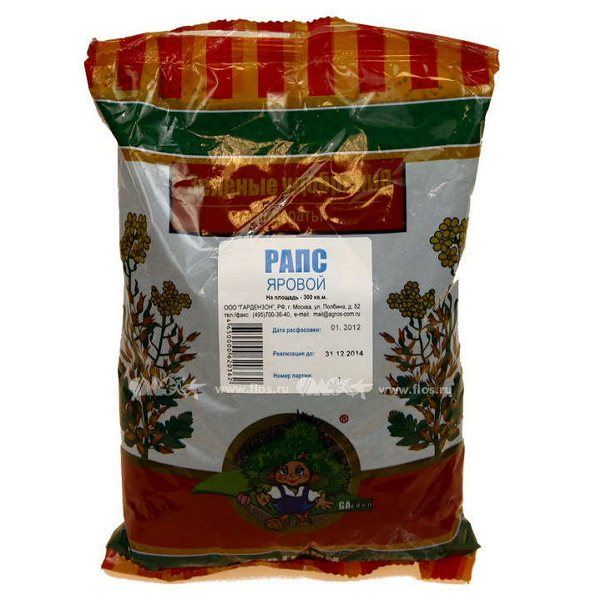

The result practically does not depend on the density of seedlings - growing, the plants occupy the entire free area. If you use green manures for their intended purpose, then they should be mowed in the flowering phase. The green mass is crushed and embedded in the ground. None of the known fertilizers can be compared with this type of fertilizer in terms of efficiency and availability!
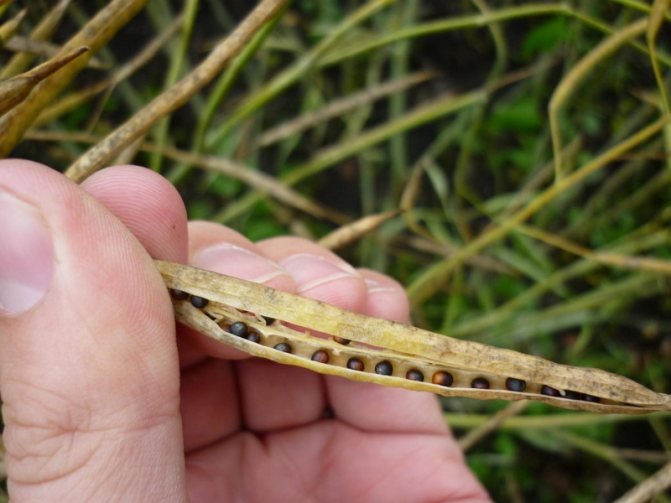

Harvesting rapeseed
You should know how to properly harvest this garden culture. If you are using rapeseed as green manure, cut it off when it reaches a height of 20 cm. By winter, you will need to plow up 10 cm. Note that this crop can be used as compost.
A couple of weeks after mowing the rapeseed, the main plant can be planted. Rape will quickly recover in growth, the second time you will need to mow it to the root after the pods are formed. As a result, you will get more biomass.
Winter rape has more benefits than spring rape. Firstly, it can be sown on different areas. Winter rape does not hinder the growth of major crops. Canola can be used as mulch. "Green fertilizer" keeps moisture and nutrients in the soil longer, it protects the roots of the garden culture from freezing.
Winter rape has certain requirements for sowing dates. I recommend sowing seeds in mid-August or early September. Sowing is usually done after harvest. Make grooves 2.5 cm in size, place them at a distance of 15 cm. After sowing the seeds, add water.
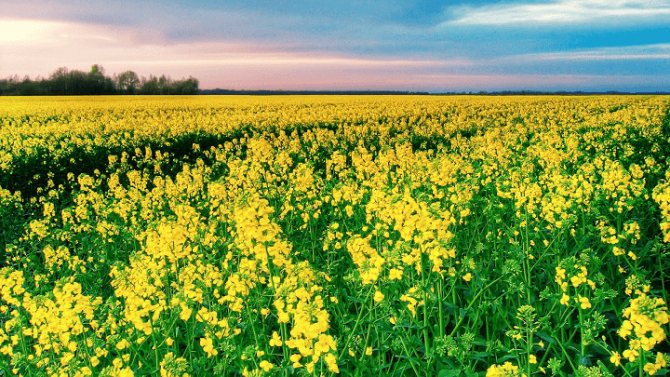

Rape is unpretentious in care. Before winter comes, the plant forms stems 25 cm in size, and it will also form a rosette that includes several leaves. Siderat does not require special care, however, it does not feel very well in a snowless winter. Rape does not respond well to a sudden cold snap in spring.
In central Russia, the plant is mowed at the end of May. The green mass is used for its intended purpose or left in the garden. To make it turn into fertilizer faster, water is added and after 20 - 25 days the main plant is planted.
Pros and cons of rapeseed greening
To grow rapeseed means to replenish the soil with vital elements: nitrogen, potassium, phosphorus. Many preparations of inorganic origin are produced with such components, but not all of them have a positive effect on cultures.
Also, rapeseed as a fertilizer is definitely better than organic. Indeed, not every composition contains all three components.
The greenhouse plant has varieties that will allow it to be used in autumn tillage and in spring. It tolerates cold winters very well. In addition, the farmer receives a fertilizer for the entire plot if he buries the cut off top in the ground.
If we sow rapeseed, we get the following results:
- Excellent cleaning of weeds. The root system of green fertilizer does not allow it to appear. It will be beneficial for the garden if you sow rapeseed between rows of noble crops in small quantities for the whole summer.
- Elimination of parasitic insects. This is possible thanks to the essential oils that the plant contains. They also help prevent infection with certain diseases.
- Return of organic and nutrient substances. This is due to the same root system. If you sow rapeseed on poor soils, they additionally use mineral fertilizers as top dressing.
- Soil restoration through deep oxygen penetration.
- For winter rapeseed there is a separate purpose: green manure enriches the soil with sulfur and other equally important substances that improve the composition of the soil.
- After mowing, the plant attracts earthworms. This means that loosening of the soil continues. After processing by worms, organic matter appears, which differs from the mass of fertilizers in a high nutrient medium.
- Use not only as a green space, but also in the form of mulch.
Interesting fact! Rape is a separate plant, but it is often confused with other equally useful species. This includes rape, mustard, blueberry. Their use as green fertilizers and disease defenders is relatively recent. All of them successfully replace inorganic drugs.
Of the negative aspects, they call the recommendation to avoid planting plants near the hives. Canola will not harm bees. Moreover, it is a honey plant, but the taste of the resulting beekeeping product does not change for the better. It is also not entirely clear if rapeseed honey can be beneficial when consumed.
Collection, storage and processing of crops
Collecting rapeseed in the fields can be done in two ways: a combine and separate harvesting. The use of a combine can speed up harvesting several times, but the fields must be free of weeds, and the plants must be evenly ripe. If the harvest cannot be mechanically harvested, it is carried out by hand.
Note: Harvesting too early will prevent the pods from thrashing.
Winter crop harvesting begins after most of the seeds turn black and almost completely dry (moisture content should not exceed 15%). After the end of the flowering period, this takes at least 60 days.
In spring, they begin to mow 55-60 days after the end of flowering. During the harvest season, the underside of the stems should be brown. Approximately fourteen days after mowing, the stems become brittle and the seeds black and hard, indicating that it is time for threshing.
Also, do not forget that ripe rapeseed crumbles very easily and the plant can easily heat up when threshed.
Before sending seeds to storage, they must be well dried. Seeds intended for sowing should have a moisture content of 12%, and for industrial processing no more than 8%. Drying of seeds is carried out in floor dryers and cold air is passed through them every two days. The seeds should not overheat as they lose their quality.
You will learn more detailed information about the benefits of growing rapeseed in the video.
Read also: Note to the gardener: a description of the best varieties of gladioli, planting and care tips
When and how to clean?
Spring rape is not recommended to be buried in the ground, but simply to be mowed. If the plans include planting the main crop, then the siderat should be mowed after regrowth by 25 cm. The greens are then slightly plowed or sent to the compost heap. The main crop is planted 14-21 days later.
If the land is resting and no plantings are planned this year, the first time the greens are mowed after regrowth by 16 cm. It will rapidly grow back again. As soon as the stripping begins, the green manure is thoroughly mowed.
For winter rapeseed, the mowing time is not so important. Usually guided by weather conditions. After the start of stitching, it's time to grab the braid. As a rule, this happens before the end of May.
It is recommended to leave green raw materials in place by sprinkling with water or EM-agents. This will speed up the decomposition process. A month will pass, and the land will be ready for further processing, cultivation of cultivated plants.
Seed preparation
An important role in obtaining high and stable yields is the correct inclusion of the crop in the crop rotation (Figure 3). You should be especially careful with the choice of the predecessor, since violation of this requirement can significantly reduce the yield, even under the condition of pre-sowing seed treatment.
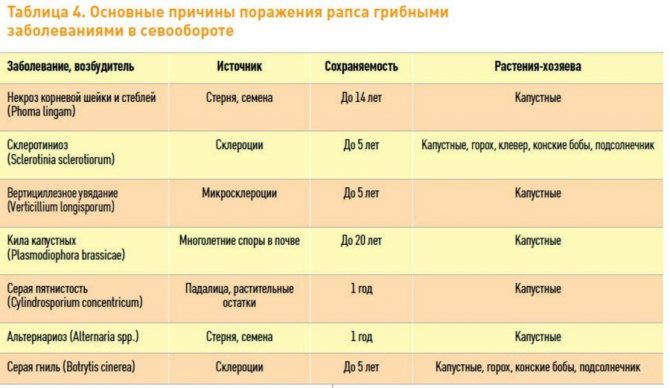

Figure 3. The need to support crop rotation
In addition, the optimum planting density must be observed. If the norm is exceeded, crops can be affected by diseases: cabbage cercosporellosis and alternaria.
Also, do not forget about the treatment of seeds with chemicals, which will help protect seedlings from damage by cruciferous flea beetles, and will also help fight Alternaria, root rot, mold fungi and black leg. During seed treatment, complex preparations are used (insecticides and fungicides).
Why do you need green fertilizers
Thanks to the cultivation of green manure, it is possible to tidy up the agricultural field in one growing season, if this operation is repeated two or three times a season. We sowed in early spring a vetch-oat mixture or white mustard, oil radish - they grew, mowed, plowed, then sowed buckwheat - plowed, and finally, winter rye can be sown with the third crop.What happens in the soil? How do plants improve it? The positive effect is manifested in three aspects.
First, a lot of organic matter and nitrogen is introduced into the soil. A significant amount of nitrogen accumulates during the cultivation and plowing of leguminous plants. On average, 1 m² of arable land receives 3.5-4.5 kg of organic matter containing 15-20 g of nitrogen (when sowing leguminous green manure), which is equivalent to 4 kg of manure. Green manures also accumulate other nutrients that are extracted by plant roots from deeper soil horizons. There is, as it were, a pumping of ash elements from the lower layers of the soil to the upper ones. Green fertilizer has a strong effect and aftereffect. For example, lupine, plowed under potatoes, within 4-5 years increases the yield by 4-6 kg from 1 m² (an increase of 20-30%).
Secondly, green manure perfectly heals the soil microflora. For example, oil radish inhibits the development of nematodes, white mustard inhibits common scab, rhizoctonia, and reduces the number of wireworms. These crops are excellent precursors for potatoes. Buckwheat is of particular importance as a phytosanitary in crop rotations with a predominance of grain crops for the natural healing of the soil from pathogenic microorganisms that cause diseases of cereals. Another case - the dugout is sick with verticilliosis. Remove strawberries, sow calendula or marigolds. During flowering, chop them up and bury them in the garden bed. These plants clean the soil better than fungicides. After a year, strawberries can be returned to this garden. Without siderates - only after 4-5 years.
Thirdly, growing rapidly, the root system and green mass of green manure suppress the growth and development of weeds. Grain siderates (rye, buckwheat) perfectly suppress weeds, which is especially important before planting row crops (potatoes, beets, carrots).
Another significant advantage of green fertilizer is that during plowing, losses of nitrogen accumulated in it are completely excluded, while during storage, transportation and incorporation of manure into the soil, it is very difficult to avoid such losses. The green mass of green manure contains approximately the same amount (or even more) of nitrogen, phosphorus and potassium, as in manure. Green manure in the soil decomposes much faster than other organic fertilizers, and thus better provide plants with nutrients.
Finally, green fertilizer improves the vital functions of soil microorganisms, as it is a succulent food and energy-rich mass. During the decomposition of the plowed green fertilizer, the soil and surface air are well enriched with carbon dioxide, improving the air nutrition of the plants. Due to green manure, the ability to move nutrients to the lower soil horizons is sharply reduced. In addition, green manure somewhat reduces soil acidity, reduces the mobility of heavy metals, increases moisture capacity, water permeability, improves soil structure and reliably protects it from water and wind erosion, significantly increasing the profitability of agriculture. Green fertilizer does not produce any production in the year of cultivation, but its beneficial aftereffect lasts 4-5 years.
By selecting the appropriate types of green manure, the timing of sowing, harvesting and mineral fertilizers, it is possible to significantly increase soil fertility and yields of the main crops. The effect of sideration is especially noticeable when cultivating sandy and sandy loam soils and slopes.
Plants that themselves loosen, heal and fertilize
The legume family - perennial and annual lupine, seradella, white melilot, winter and spring vetch, common peas, rank of sowing, golden beans, blue and yellow alfalfa, red (meadow), pink and white clover, lentils, vicolis sainfoin.
The family of cereals - winter rye, annual and perennial ryegrass, barley, oats, triticale (a hybrid of wheat and rye); from buckwheat - sowing buckwheat.
The cruciferous (cabbage) family - white mustard, winter and spring rape, winter rape, oil radish.
Medicinal and decorative - calendula officinalis, marigolds.
From melliferous plants - phacelia, sunflower (both oil-bearing varieties and decorative ones).
These are the main siderates. Below are brief descriptions of some of them.
White melilot (Melilotus albus) is a biennial plant of the legume family. The root system, in symbiosis with nodule nitrogen-fixing bacteria, binds up to 180 kg of atmospheric nitrogen per hectare. Good honey plant. It blooms for a long time and gives off a large amount of nectar even under adverse weather conditions. It grows well on soils of various types - from sandy to clayey in a wide range of acidity. Withstands prolonged drought. Seeding rate of seeds is 20-25 kg / ha. Price for 1 kg of seeds - Ls 1.50.
Rowan-leaved phacelia (Phacelia tanacetifolia) is an annual plant of the aquifolia family. Valuable honey plant. Visited by bees throughout the day to collect nectar and pollen. Duration of flowering is 40-50 days. Sowing at different times provides bees with bribes for a long period, even under adverse conditions. It is frost-resistant, continues to release nectar even after autumn frosts. Grows well on slightly acidic loamy and sandy soils. As a fodder crop it is used in a herbal mixture with vetch and oats and with peas and oats. Seeding rate of seeds is 10-12 kg / ha. Price for 1 kg of seeds - Ls 6.10.
Sowing buckwheat (Fagopyrum esculentum) is an annual plant of the buckwheat family. In terms of yield, buckwheat is not an outstanding crop and is highly dependent on the weather conditions of the season. It is sensitive to cold and prolonged drought. Due to its long flowering, it is a valuable honey plant. Honey has a very high biological value, just like pollen. It grows well with soil acidity in the pH range of 4.8-7. Seeding rate 70-90 kg / ha. Price for 1 kg of seeds - Ls 1.40.
Oil radish (Raphanus sativus) - an annual of the cabbage family - is an undemanding and fast-growing plant. The harvest of green mass gives already 40 days after germination, therefore it can be used as a catch crop. It grows well on various types of soils, including peatlands. Seeding rate of seeds is 25-30 kg / ha. Price for 1 kg of seeds - Ls 1.00.
White mustard (Sinapis alba) is an annual plant in the cabbage family. The one from the seeds of which mustard powder, mustard plasters and plaster are made. It is used as green manure, honey plant, fodder and industrial plant to obtain valuable oil used in food and chemical-pharmaceutical industries. Honey productivity - 50-90 kg / ha. The plant is cold-resistant: the seeds germinate at a temperature of 1-2 ºС, the seedlings tolerate frosts down to -6 ºС. Undemanding to the soil, but moisture-loving. Seeding rate - 20-25 kg / ha. Cannot be planted as a precursor for cabbage due to specific pests. Price for 1 kg of seeds - Ls 1.40.
Lupines (Lupinus). All species produce a lot of green mass and accumulate a significant amount of nitrogen even on the poorest sandy soils. Unlike other legumes, they grow well in acidic soils and do not tolerate liming. Their powerfully developed root system is able to well dissolve hard-to-reach soil and fertilizer phosphates, which makes it possible to apply phosphorite and bone meal under the lupins, the phosphorus of which becomes available for all subsequent crops. Phosphorus and potash fertilizers are applied under lupine before sowing for digging (20-30 g / m² of active ingredient). Strong roots also improve the structure of heavy, poorly water-permeable soils, penetrating to great depths and loosening it. For sowing perennial lupine, plots are allotted not only in the crop rotation, but also in open spaces, aisles in young orchards and nurseries. In these areas, perennial lupine is sometimes left for 6-8 years or more, using the mowing mass to fertilize neighboring fields, tree-trunk circles in fruit-bearing gardens.
It's time to take care of the soil
Siderata are sown at several times: in early spring, in summer (in August) and before winter. The vacated areas from under the early crops are plowed, and in small areas they are treated with a Fokin flat cutter. On the same day, seeds are sown, lightly rolled, if there is no rain, they are watered. The faster the seeds sprout, the more green mass will grow before the onset of autumn frosts, so it is reasonable to pre-treat the seeds with stimulants. In the fall, green manures are crushed and buried, then in the spring you can plant and sow any crop on them. Winter rye, rapeseed are also sown in August so that they have time to sprout, sprout and prepare for winter. In the spring they are grown and embedded to a depth of 6-10 cm. The green mass decomposes in the soil after 3-5 weeks. If the main crop requires earlier planting dates in the spring, then the grass is buried only in the aisles. Practice has shown that the incorporation of too much raw biomass into the soil has a negative effect on the yield of the main crop, since the green manure does not rot, but sour. Therefore, the surplus of green manure is mowed and used for mulching or laid in a compost heap.
Summer crops of green manure are good for tree trunks of fruit and berry crops. But the grass is not mowed in the fall, but is left for the winter and covered up only in the spring. Nasturtium is a good ground cover for fruit tree trunks.
I would like to warn gardeners and gardeners who are just starting to cultivate green manure - do not be alarmed by the ugly appearance of the site after the planting of the green mass, in a month everything will rot.
Remember that the soil in greenhouses needs special care. During the growing season, white clover can be sown in the aisles, and after harvesting the main crops, sow winter rye, wheat or oats there. In the spring, before planting heat-loving crops, you can have time to grow peas.
For those who will develop new land plots, and they are, as a rule, infertile, overgrown with weeds, it would be reasonable to postpone the cultivation of garden crops for a year and, above all, start growing green manure. During the season, they can be sown again 2-3 times: the first crop has grown - mowed, embedded in the soil, sowed again. Thus, the fertility and health of the soil will significantly increase, the number of weeds will decrease, which means that you do not need pesticides. For the sake of such benefits, it is worth a little work, and a small plot should be allocated for vegetables for the first year. And from an economic point of view, it is very profitable to cultivate green manure. Especially nowadays, when manure costs a lot of money, and its quality is poor. As a result of such an easy and intelligent technology, you save time, effort, money and get a rich environmentally friendly harvest.
A hundred square meters of a vegetable garden (100 m2) will require approximately:
- white mustard - 120 g,
- oil radish - 200 g,
- rapeseed - 300 g,
- rye - 1.5 kg,
- oats - 2.5 kg
- peas - 2-2.5 kg,
- spring vetch - 1.7-1.9 kg,
- pea-oat mixture - 2 kg (1.2 kg peas + 0.8 kg oats),
- vetch-oat mixture - 2 kg (1.2 kg vetch + 0.8 kg oats),
- lupine - 1.2-2.0 kg.
How to use
The methods of using the grown green mass of green manure are varied: either the entire plant mass (both aboveground and roots) or only a certain part of it is used. There are three main forms of green fertilizer: full, cut and aftermath. A complete green fertilizer is when all the grown plant mass is plowed in. Green fertilizer is called a mowing green fertilizer if only the aboveground mass of green manure, grown in another area and transported after mowing, is embedded in the soil. An example of a green mowing fertilizer is the cultivation of perennial lupine in a hatching field or in the aisles of fruit trees. The aftermath is the plant mass grown after the first mowing.The mowing and aftermath mass is used to fertilize the trunks of fruit and berry plants, vegetable crops, or lay it in compost.
The period of plowing of green fertilizer is essential. The green bean fertilizer is ready in the green bob phase, the cereal fertilizer at the time of tubing. If there is little mobile nitrogen in the soil, then the green fertilizer is plowed earlier (sufficient time is needed for its decomposition). With the danger of drying out the soil, it is also impossible to lag behind the plowing of green fertilizer.


